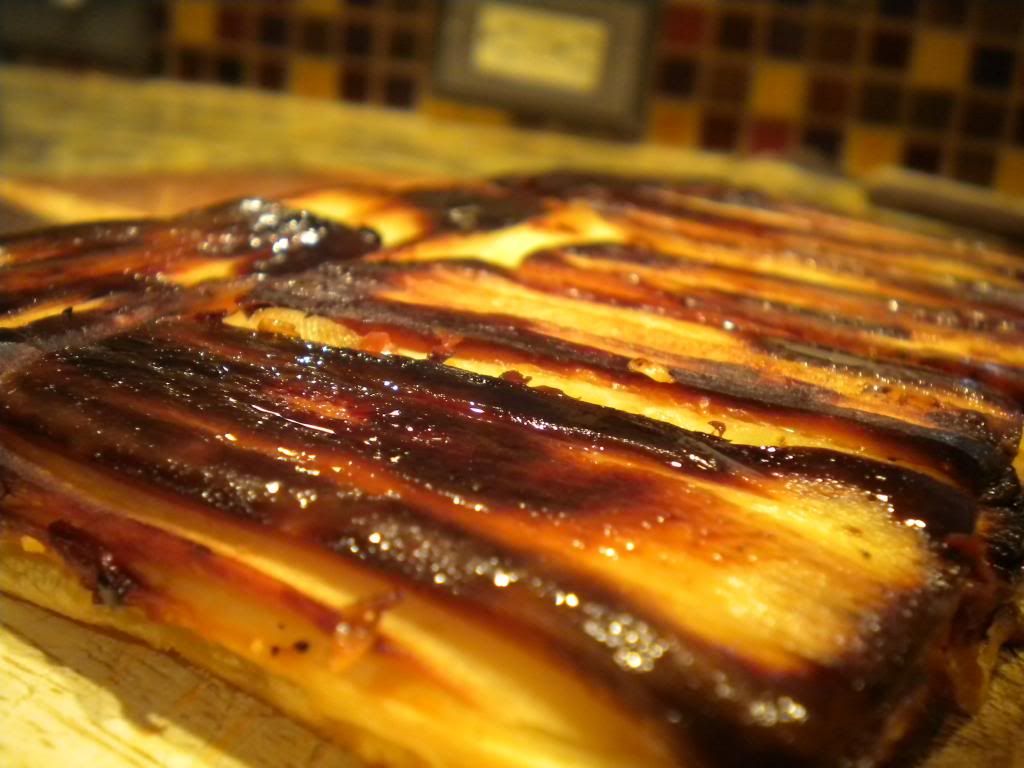fresh thyme, dijon, and shallots
The pave had a golden almost candied exterior, which provided an earthy yet sweet flavor. After experimenting with this recipe I began to wonder about the natural sugar content of parsnips. Here's what a little research revealed.
The starch in a parsnip readily converts to sugar when exposed to cold. This means that winter parsnips will be sweeter than autumn parsnips. It also means that they get sweeter when refrigerated.
Parsnips enclose natural sugars that give the vegetable a sugary flavor. During the reign of Queen Elizabeth, people in England used parsnips in the form of a sweetmeat by adding honey and spices to it. In addition, they cooked the thick root of the plant and served it as a vegetable. In parsnips, carbohydrates are stored as natural sugars. This is something different from potatoes, wherein carbohydrate comprises 90 per cent starch. In effect, compared to carrots, parsnips are considered to be sweeter, as nearly three fourth of the sugar enclosed by parsnips is sucrose - the same sugar which is extracted from sugar cane. Comparatively, in carrots, sucrose forms just one third of the root vegetable's sugar content. When sucrose is consumed in its natural form along with the parent plant, it is not harmful for our health.


